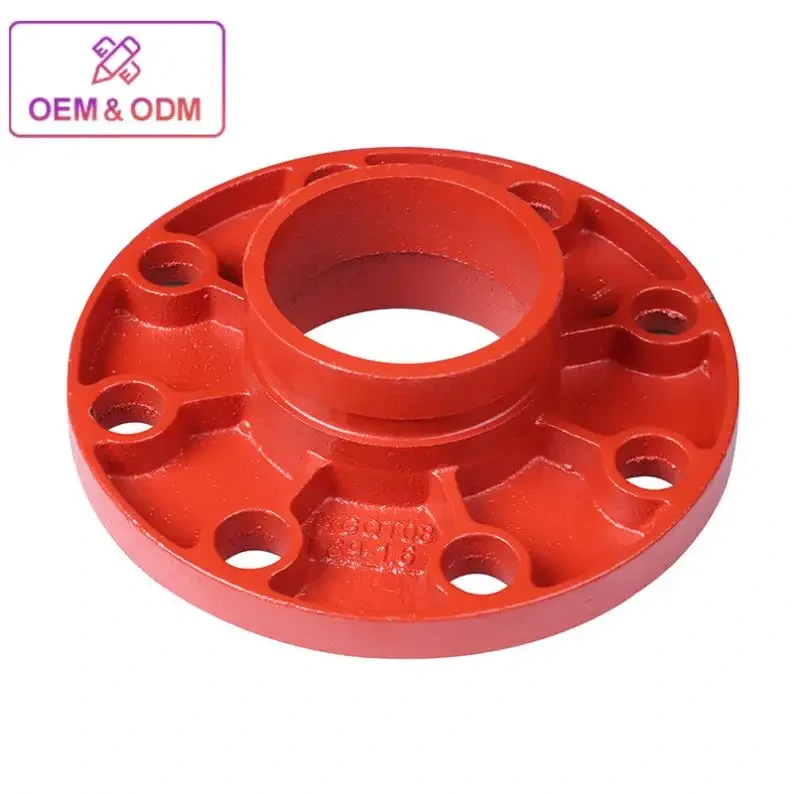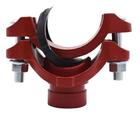
Quanzhou Howfun IMP & EXP Trading Co., Ltd. » Notes » How do grooved fittings handle internal and external pipe stresses?

-
How do grooved fittings handle internal and external pipe stresses?
Grooved fittings are designed to handle both internal and external pipe stresses effectively, ensuring the integrity and reliability of piping systems.
Here's how grooved fittings manage these stresses:-
Internal Pipe Stresses: Grooved fittings accommodate internal pipe stresses, such as pressure, fluid flow, and temperature variations, by providing a secure and leak-tight connection between pipe segments. The grooved coupling engages with the grooves cut into the pipe ends, creating a mechanically strong joint that can withstand internal pressures without leaking or failing. The gasket installed within the coupling forms a resilient seal that prevents fluid leakage and maintains system integrity under pressure.
-
External Pipe Stresses: Grooved fittings also address external pipe stresses, including axial, radial, and angular forces exerted on the piping system due to thermal expansion, contraction, vibration, or mechanical loading. The flexible nature of grooved couplings allows for limited axial movement, expansion, and contraction of the pipe while maintaining the connection integrity. Additionally, the design of grooved fittings distributes radial and angular loads evenly along the circumference of the pipe, minimizing stress concentrations and potential points of failure.
-
Flexibility and Movement: Grooved fittings offer inherent flexibility and movement capabilities, allowing pipes to expand, contract, or shift within the fitting assembly without compromising joint integrity. This flexibility reduces the risk of stress-related issues such as pipe distortion, joint separation, or gasket extrusion, particularly in systems subjected to temperature fluctuations or dynamic operating conditions.
-
Reduction of Stress Concentrations: The design of grooved fittings helps reduce stress concentrations at the joint interface by distributing loads evenly along the length of the groove engagement. This helps mitigate the risk of localized stress buildup and potential failure points, enhancing the overall durability and longevity of the piping system.
-
Corrosion Resistance: Many grooved fittings are manufactured from corrosion-resistant materials such as ductile iron, stainless steel, or engineered polymers, which further contribute to their ability to withstand internal and external pipe stresses over extended periods. Corrosion-resistant materials minimize the risk of material degradation, embrittlement, or weakening caused by environmental factors or aggressive media.
Overall, grooved fittings provide a robust and reliable solution for handling both internal and external pipe stresses in a wide range of piping applications, offering flexibility, durability, and leak-tight performance under various operating conditions. Proper selection, installation, and maintenance of grooved fittings are essential to ensuring their effectiveness in managing pipe stresses and maintaining system integrity over time.
How do ductile iron grooved fittings comply with building codes and regulations?Ductile iron grooved fittings are commonly used in piping systems and are designed to comply with relevant building codes and regulations to ensure their safe and reliable use in various applications. Here's how ductile iron grooved fittings typically comply with building codes and regulations:
-
Material Specifications: Ductile iron grooved fittings are manufactured in accordance with industry standards and specifications, such as ASTM A536 for ductile iron castings. These standards define the chemical composition, mechanical properties, and quality requirements of ductile iron materials, ensuring consistency and reliability in manufacturing.
-
Product Certification: Ductile iron grooved fittings may be certified by independent third-party certification bodies to verify compliance with applicable standards and regulations. Certification marks or labels indicate that the fittings have undergone rigorous testing and evaluation to meet specific performance and quality criteria.
-
Pressure Ratings: Ductile iron grooved fittings are rated for specific pressure classes based on their design and intended application. These pressure ratings are determined in accordance with recognized industry standards, such as ANSI/ASME B16.3 for malleable iron and ANSI/AWWA C606 for ductile iron fittings, ensuring that fittings are suitable for the intended pressure and temperature conditions.
-
Leak Tightness: Ductile iron grooved fittings feature a grooved coupling system that provides a secure and leak-tight connection between pipe segments. The gasket installed within the coupling forms a reliable seal that prevents fluid leakage under pressure, ductile iron grooved fittings meeting the requirements for leak tightness specified in building codes and regulations.
-
Fire Protection: Ductile iron grooved fittings are commonly used in fire protection systems, where they must comply with specific regulations and standards for fire resistance and performance. Fittings used in fire protection applications are often tested and listed by regulatory bodies such as Underwriters Laboratories (UL) or Factory Mutual (FM) to ensure compliance with fire safety requirements.
-
Corrosion Resistance: Ductile iron grooved fittings are available with corrosion-resistant coatings or linings, such as epoxy powder coating or hot-dip galvanizing, to protect against corrosion in aggressive environments. These coatings ensure that fittings meet the durability and longevity requirements specified in building codes and regulations.
-
Installation Practices: Ductile iron grooved fittings must be installed in accordance with manufacturer's instructions and recognized industry practices to ensure proper alignment, assembly, and sealing of joints. Installation practices are often specified in building codes and regulations to maintain system integrity and reliability.
-
Testing and Inspection: Ductile iron grooved fittings may undergo testing and inspection procedures to verify compliance with applicable standards and regulations. These tests may include hydrostatic pressure testing, dimensional inspection, and material analysis to ensure that fittings meet performance and quality requirements.
By adhering to these measures, ductile iron grooved fittings can effectively comply with building codes and regulations, ensuring their safe and reliable use in piping systems for various applications, including plumbing, HVAC, fire protection, and industrial processes.

-
-







